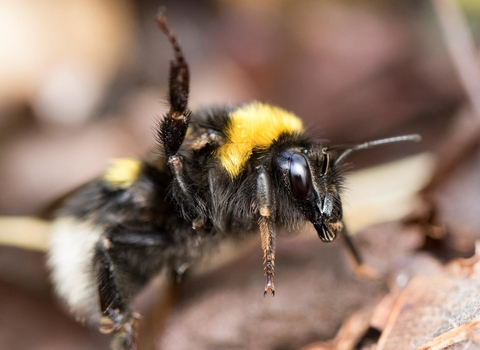
Garden Bumblebee ©Chris Lawrence
Garden bumblebee
Unsurprisingly, the garden bumblebee can be found in the garden, buzzing around flowers like foxgloves, cowslips and red clover. It is quite a large, scruffy-looking bee, with a white tail. It nests in colonies.
